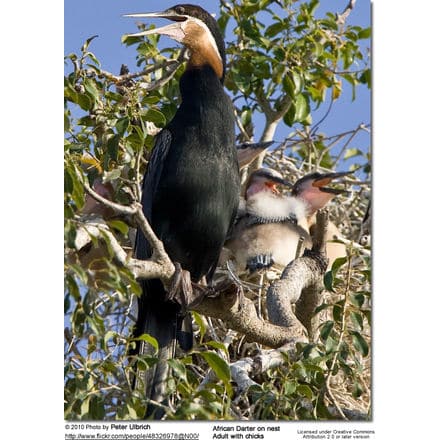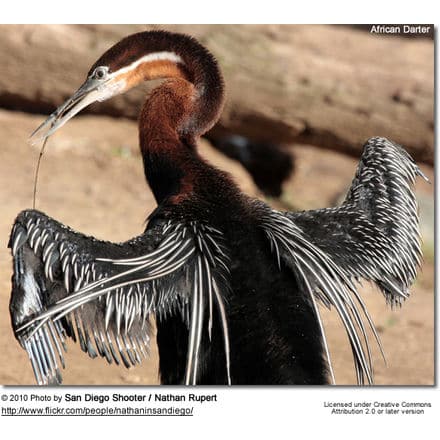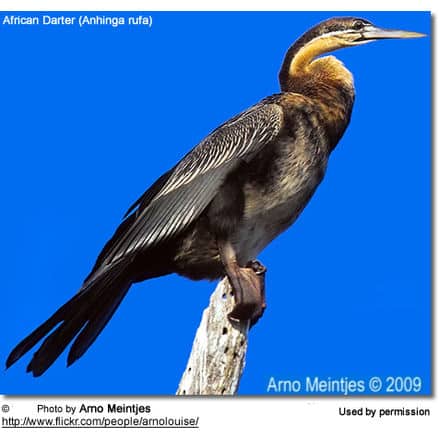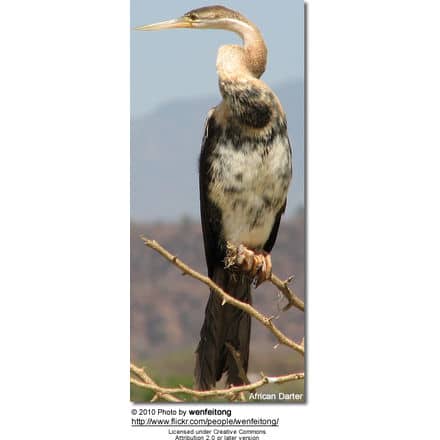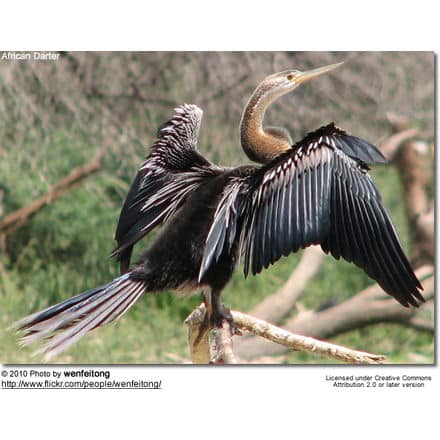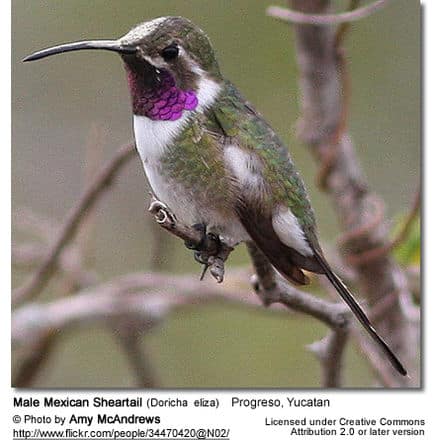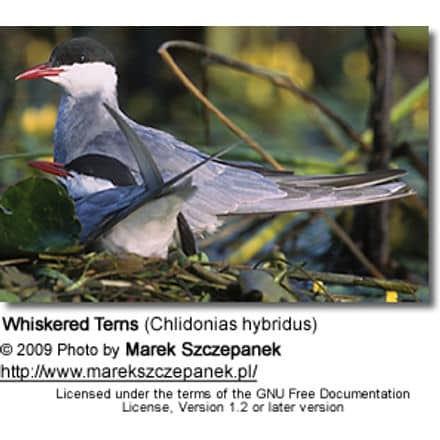African Darter or Snakebird
The African Darters (Anhinga rufa) are also commonly known as Snakebirds – named so for the way their thin, long, snake-like necks are often seen sticking out of the water as the rest of their bodies is submerged, or when mated pairs twist their necks during their bonding displays.
These water birds are able to turn, twist and contort their necks in unusual ways.
The name “Darter” alludes to their manner of procuring food, as they impale fishes with their slim, pointed beaks.
Distribution / Range
They are endemic to tropical sub-Saharan Africa, where they are typically found in or near bodies of both saline and fresh water. They particularly favor mangrove habitats.
An isolated population is also found at the Lower Mesopotamian wetlands in Iraq, where they used to breed in colonies with Pygmy Cormorants and Sacred Ibises and other Waterfowl.
Description
The African Darters are large, slim water birds that measure about 80 cm in length, including their long, rounded tails. These cormorant-like birds often swim with only the neck above water.
They have very long and sharp beaks, which they use to spear their slippery fish prey.
The male’s plumage is mostly glossy black with white streaking.
Females and juveniles have a browner plumage.
They are able to retract and extend their necks and maintain the neck retracted during flight – unlike most other long-necked birds
Similar Species:
The African Darter resembles the American Darter, but can be recognized by the thin white lateral neck stripe.
This species can be differentiated from cormorants by their pointed bills.
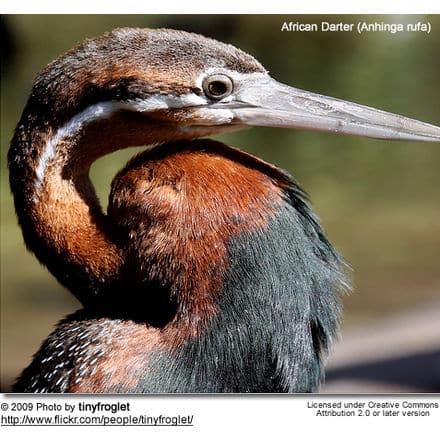

Breeding / Nesting
They typically place their stick nests in trees, often nesting in colonies with herons, egrets and cormorants.
The average clutch consists of 3 to 6 eggs.
Diet / Feeding
They mostly feed on fish or aquatic insects caught in water. Insects are caught while swimming in water, but they typically dive for fish. Fish is usually swallowed whole, head first.
Unlike most other water birds, their feathers don’t contain any oil, thus are not waterproof. This makes them less positively buoyant, allowing them to more easily dive under water.
However, the lack of oil, causes their plumage to become waterlogged and in order to maintain heat insulation, they need to dry their feathers.
To this end, they are often seen near the water sitting on land, on rocks or on trees with their wings spread to the sides allowing the feathers to dry in the wind and the sun.
